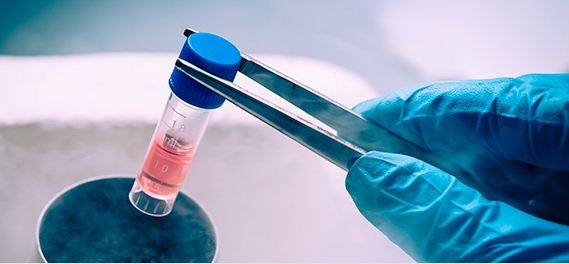Es importante la clasificación de los ATMP a los efectos de identificar aquellos que requieren autorización de comercialización o licencia. En FDA, dicho permiso es federal.
Según terminología de la FDA, CBER, the ATMP comprende:
- Material que forma parte de la terapia génica; incluye las células que han sido modificadas genéticamente. Ello debe ser evaluado con lo intencional, es decir, el uso terapéutico.
- Clasificación particular: células, tejidos y productos compuestos (constituidos) por
células y tejidos, de origen humano (calificadas como Human Cells, Tissues, and Cellular and Tissue-Based Products (HCT/Ps)).
- La anterior, incluye a las células madre recuperadas de la sangre del cordón umbilical (stem cell) destinadas al trasplante alogénico y a los productos para xenotrasplante (obtenidos de entidades biológicas de otras especies).
Régimen jurídico básico. La calificación de producto biológico. Es de aplicación: Section 351 of the Public Health Service (PHS) Act defines a biological product as a “virus, therapeutic serum, toxin, antitoxin, vaccine, blood, blood component or derivative, allergenic product, or analogous product, … applicable to the prevention, treatment, or cure of a disease or condition of human beings.” [Se refiere a la ley de los servicios de salud pública. Compárese con los términos de la Ley 16.463].
No puede perderse de vista que la norma anterior remite a la Secc. 361, que alcanza a los medicamentos y productos biológicos, y además reenvía a la ley FD and C (FDCA), tal que: section 361 of the Public Health Service Act (PHS Act) (42 U.S.C. 264), while others would be regulated as drugs, devices, and/or biological products under section 351 of the PHS Act (42 U.S.C. 262) and/or the Federal Food, Drug, and Cosmetic Act (the act).
La ratio de las normas es la salud pública y la prevención de la propagación de enfermedades transmisibles a través de las actividades vinculadas a las entidades biológicas, entre los cuales están los ATMP.
La competencia de la FDA. Comprende la jurisdicción federal (que involucra la commerce clause; interstate commerce) y la competencia de FDA en la actividad de distribución interestatal de los productos. ¿Alcanza también al movimiento interestatal de personas (donantes / receptoras de material biológico) o el de su material, una vez separado del cuerpo, destinado al uso industrial o a la elaboración de productos ATMP? [Ya hay jurisprudencia de los tribunales federales favorables].
| La regulación exclusiva de la section 361, PHS Act solo se aplica a los HCT/P cuando se cumplen todos los criterios de exclusión enumerados en el párrafo a) puntos 1) a 3) de la Sec. 1271.10 como se señala más abajo. Normativa: CFR Title 21 —- FOOD AND DRUGS SUBCHAPTER L–REGULATIONS UNDER CERTAIN OTHER ACTS ADMINISTERED BY THE FOOD AND DRUG ADMINISTRATION PART 1271 — HUMAN CELLS, TISSUES, AND CELLULAR AND TISSUE-BASED PRODUCTS Sec. 1271.10. Are my HCT/P’s regulated solely under section 361 of the PHS Act and the regulations in this part, and if so what must I do? |
| Criterio de exclusión o delimitación: (a) An HCT/P is regulated solely under section 361 of the PHS Act and the regulations in this part if it meets all of the following criteria: (1) The HCT/P is minimally manipulated; (2) The HCT/P is intended for homologous use only, as reflected by the labeling, advertising, or other indications of the manufacturer’s objective intent; (3) The manufacture of the HCT/P does not involve the combination of the cells or tissues with another article, except for water, crystalloids, or a sterilizing, preserving, or storage agent, provided that the addition of water, crystalloids, or the sterilizing, preserving, or storage agent does not raise new clinical safety concerns with respect to the HCT/P; |
Se suma a las condiciones anteriores:
4) Does not have a systemic effect and is not dependent upon the metabolic activity of living cells for its primary function; or
5) Has a systemic effect or is dependent upon the metabolic activity of living cells for its primary function, and is for autologous, 1st or 2nd degree blood relative, or reproductive use. En este caso:
(a ) Is for autologous use;
(b ) Is for allogeneic use in a first-degree or second-degree blood relative; or
(c ) Is for reproductive use.
¿Cuáles son las cuestiones relevantes relacionadas a la afectación potencial de la seguridad de los Productos celulares de TA?
- Risks of the delivery procedure (procedimiento de inyección, etc.)
- Ex vivo manipulation (e.g., expansion, genetic modification, encapsulation, scaffold seeding) (procesos realizados sobre el material fuera del nicho o del organismo del que proviene)
- Potential inflammatory / immune response to the administered cellular product (efectos del injerto)
- Inappropriate cell proliferation (i.e., tumor formation) (control)
- Inappropriate cell differentiation (i.e., ectopic tissue formation)
- Cell migration to non-target areas/tissues;
- Fuente FDA: Preparing an IND Application: Preclinical Considerations for Cell and Gene Therapy Products
- Muchos otros (modificaciones cronocelulares, apoptosis inducida, etc.).
Regenerative Medicine (FDA Guidance Documents).
1. Regulatory Considerations for Human Cell, Tissues, and Cellular and Tissue-Based Products: Minimal Manipulation (MM) and Homologous Use (HU) – Final.
2. Same Surgical Procedure Exception under 21 CFR 1271.15(b): Questions and Answers Regarding the Scope of the Exception – Final.
3. Evaluation of Devices Used with Regenerative Medicine Advanced Therapies – Draft
4. Expedited Programs for Regenerative Medicine Therapies for Serious Conditions – Draft
Regulation of Human Cells, Tissues, and Cellular and Tissue-Based Products

